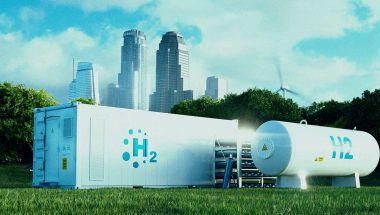- | 3:22 pm
How India leads the global fight against climate change
A look at the nine areas where India is taking the lead in global climate action, from green and solar energy to water management

India has been at the forefront in the push towards shaping a global agenda on sustainability.
From pioneering the setting up of the International Solar Alliance to launching initiatives such as the Coalition for Disaster Resilient Infrastructure, Mission LiFE, and the most recent Global Biofuels Alliance, New Delhi has been galvanizing global commitment to green development.
In June, Prime Minister Narendra Modi said in an address at the White House that India is the only country in the group of 20 (G20) economies to have met its Paris climate action commitments, and that, too, several years in advance.
At the G20 Summit this month, India, in keeping with its belief in Vasudhaiva Kutumbakam (the world is one family), got world leaders to renew their commitment to sustainable development for a greener planet and for the prosperity of future generations.
Last week, the US-India Strategic Partnership Forum and ReNew, along with the Consulate General of India in New York, released a report, titled India’s Global Leadership on Climate Action, on the sidelines of Climate Week 2023 in New York City. A look at nine areas where the report highlights India’s leadership role in climate action:
1. Developing green energy

India has become a global leader in renewable energy under Modi’s leadership. The country’s installed renewable energy capacity is at nearly 170GW now, and that includes a 25-fold jump in solar power capacity since 2014. Through transparent auctions and payment guarantee facilities, the government has reduced solar and wind energy costs. Policy initiatives such as ‘one nation, one grid’ and performance-linked incentives have further spurred growth. Renewables have overtaken coal when it comes to building new generating capacity, and over 600GW of coal-fired power proposals have been halted or scrapped. The renewable sector’s maturity has attracted both domestic and global investments.
2. Building disaster-resilient infrastructure
Initiated by Modi at the 2019 UN Climate Action Summit, the Coalition for Disaster Resilient Infrastructure (CDRI) has garnered support from 31 national governments, and six key international organizations. Focused on mainstreaming disaster resilience in sectors such as health, telecommunications, transport, and power, CDRI developed strategies for ‘Infrastructure for Resilient Island States’, aimed at aiding Small Island Developing States. It’s also preparing a Biennial Report on Global Infrastructure Resilience due in October. As a ‘knowledge partner’, CDRI contributed to India’s G20 Presidency in Disaster Risk Reduction. CDRI aims to strengthen global efforts for disaster and climate-resilient infrastructure.
3. Transitioning to solar
India and France co-founded the International Solar Alliance (ISA) in 2015 to boost solar energy worldwide. Open to all UN members, ISA aims to create regulatory frameworks and capacity-building for transitioning to solar. India serves as a model, having added 70,000 MW of solar capacity. ISA focuses on demonstration projects to highlight immediate benefits like electricity access and job creation. India is also an anchor investor in a Payments Guarantee Facility to encourage investments in Africa. The alliance is working on the “One Sun, One World, One Grid” initiative to interlink regional electricity grids.
4. Using nature for climate goals
India is turning to nature to help combat climate change, safeguard wildlife, and improve the environment. Initiatives such as the Green India Mission and the National Afforestation Program aim to expand forest areas that now cover roughly one-fourth of the country. These forests are capturing harmful gases, aiding India in fulfilling the global climate goals that it has agreed to. Both government and business sectors are collaborating and finding new ways to fund these natural solutions, with the efforts doing more than just help the environment, but also creating jobs and improving community well-being.
5. Leveraging market-based tools

India is a leader in using market-driven climate solutions such as carbon offsets, with nearly 36 million carbon credits issued globally. It holds a significant 31% share of all Clean Development Mechanism projects, aiming to reduce emissions. Innovative policies such as Renewable Energy Certificates and performance-based incentives encourage clean energy adoption. Plans for a Green Credit Program and a Domestic Carbon Market are in the pipeline this year to make this sector more structured. Cities and corporations are getting on board with projects like dense, fast-growing Miyawaki forests and eco-friendly cookstoves from ReNew. Article 6 of the Paris Agreement, which allows for international cooperation through carbon markets, offers India further opportunities in green hydrogen and agriculture.
6. Empowering the green workforce
India is making strides to prepare its workforce for a greener future. The country has ambitious plans to create 35 million green jobs by 2047 and already holds a robust capacity in renewable energy. Government programs like the Pradhan Mantri Kaushal Vikas Yojana and Sector Skill Councils have helped skill millions of Indian youth. Specifically, the Skill Council for Green Jobs provides targeted training in emerging fields like green hydrogen and e-mobility. As the sector grows, focus on gender-specific strategies, upskilling, and financial frameworks will be crucial for sustainable employment in clean energy.
7. Pioneering green hydrogen solutions

As a torchbearer in the green hydrogen revolution, India is transforming its energy landscape. With ambitious plans like the National Green Hydrogen Mission and a budget of ₹19,744 crore ($2.47 billion), it aims to produce 5 mt green hydrogen annually by 2030. India is overcoming challenges such as high production costs by offering investment incentives, including tax breaks. Technological innovation is also a focus, supported by renewable energy training institutes and skill councils. The government is not just a policy-maker but an active participant, with large investments from state-owned energy firms NTPC and Indian Oil fueling this clean energy transition. Through initiatives like hydrogen refuelling stations and hydrogen-powered vehicles, India’s green hydrogen strategy is not just a vision but a reality in the making.
8. Safeguarding water resources
India is leading the way in combating the global water crisis exacerbated by climate change. Despite housing 17.5% of the world’s population with less than 4% of its freshwater, India’s comprehensive water management strategies promise universal water security. Key initiatives such as the Jal Shakti Abhiyan, ‘Catch the Rain’ campaign, and Jal Jeevan Mission are doing their bit to address water scarcity and promoting sustainable usage across sectors. By integrating technology, policy, and community involvement, India is safeguarding its water future while serving as a blueprint for tackling water crises globally.
9. Ensuring a fair and green transition

In India, transitioning from fossil fuels such as coal to renewables is both an opportunity and a challenge. While ambitious goals set for 2030 promise sustainability, they also raise concerns about job losses in coal-dependent communities. The geographical imbalance between coal-rich and solar-rich states adds to the complexity. However, innovative programs such as Project Surya offer a beacon of hope. This initiative trains underprivileged women in Gujarat in solar technologies, achieving gender empowerment and poverty reduction. As the costs of renewables decline and job prospects grow, India is steadily making strides toward a truly just transition.
Randhir Jaiswal, consul general of India in New York, wrote the foreword to the report, while ReNew; Amit Prothi, director-general of CDRI; the ISA secretariat; Vibha Dhawan of The Energy Resources Institute; Ved Mani Tiwari, chief executive officer of the National Skills Development Corporation; Anish De, global head for energy, natural resources, and chemicals at KPMG; Bharat Lal, founder mission director of the National Jal Jeevan Mission; and Vaishali Nigam Sinha, co-founder and chair-sustainability at ReNew, wrote the case studies.












